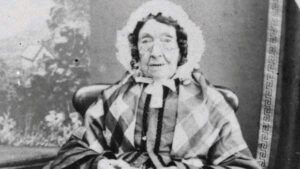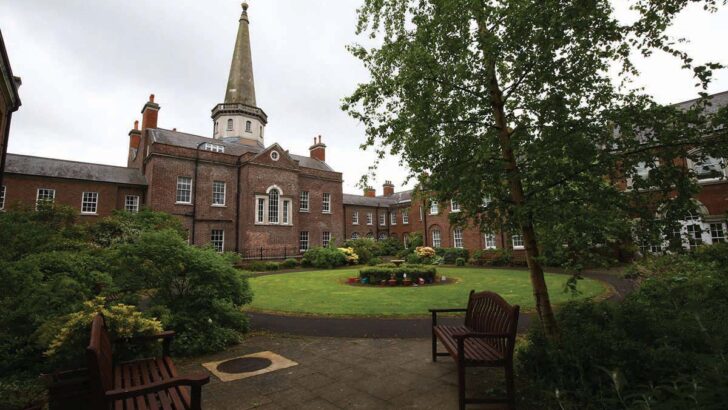The first great charity of this town: Belfast Charitable Society and its role in the developing city edited by Olwen Purdue (Irish Academic Press, €29.95/£24.99)
The Belfast Charitable Society was established in 1752 for the purpose of raising funds to build a poorhouse and hospital for the poor of Belfast.
The result was the building known today as Clifton House, opened in 1774. As Sir Ronnie Weatherup, the current chairman of the Society, points out in the first essay in this volume, Belfast was then “a small town that relied on voluntary charitable action to develop an institution that would provide support for the sick and needy”.
The town’s mercantile, professional and industrial classes took the initiative in this, stepping in to fill the vacuum in the leadership of public life in Belfast that followed the departure of the local landlords, the Chichester family (Earls of Donegall), from the town after the burning of their castle in 1706.
This volume comprises 11 essays in which a range of scholars explore the history of the Society and its role in responding to social issues in Belfast. Its focus is on the first 150 years of the Society, a period when Belfast experienced phenomenal growth and rapid industrialisation.

Ciarán McCabe records in his essay that the population of the town more than doubled from 18,000 to 37,000 between 1791 and 1821, and it continued to increase until it stood at 350,000 circa 1900. This, he points out, was “driven by inward migration from its rural hinterland and elsewhere in the north, largely of relatively poor persons”. Belfast became a city only in 1888.
Involved
Many of those associated with the Society in its earliest years were also involved with the Society of United Irishmen, founded in Belfast in October 1791. The connection between the Charitable Society and some of Belfast’s more radical citizens at that time is discussed in an essay by Kenneth Dawson. Samuel Neilson, editor of the Northern Star newspaper, the organ of the United Irishmen, was a treasurer of the Society; and Henry Joy McCracken’s sister, Mary Ann, was a key figure in the work of the Society throughout her long life of 96 years – albeit through the Society’s Ladies Committee. No woman served on the board of the Society until 1920.
Mary Ann McCracken is the subject of a separate essay by Cathryn McWilliams, drawing extensively on her correspondence. Towards the end of her life, Mary Ann lamented that Belfast had lost the revolutionary spirit that it had in her youth. She wrote in 1859 that “Belfast once so celebrated for its love of liberty is now sunk in the love of filthy lucre”.
Mary Ann’s cousin, Henry Joy – owner of the Belfast News Letter, founded by his grandfather in 1737 – was also a supporter of the Society. He described it as “the first great charity of this town”, and that is the apt title of this volume. Incidentally, the Belfast Charitable Society is nearly 40 years older than Dublin’s oldest surviving charity, the Sick and Indigent Roomkeepers Society. It, like the Belfast Society, was founded by merchants acting in a voluntary capacity to relieve urban poverty.
Further essays set the work of the Society in the wider context of the social and economic history of Belfast. Apart from addressing problems of deprivation and sickness within the Poorhouse, the remit of the Society gradually expanded to take on responsibilities for matters normally dealt with by municipal authorities, including the regulation of begging, the supply of fresh water and provision for the burial of the dead.
Assistance
In addition, it would provide “outdoor” relief – that is, assistance to needy persons who had not been admitted to the Poorhouse – and it opened a school to remove some of the poorest children from the streets and prepare them for work in the industrial town.
By examining these ancillary activities of the Society, this volume makes an important contribution to Irish urban history – a sadly neglected field, as the editor of the volume, Olwen Purdue, reminds us in her introduction. She suggests that this is “the result of the tendency of Irish historians to focus on the political struggles of the past, but also because of Ireland’s overwhelmingly rural character”.
Clifton House – the Poorhouse built by the Belfast Charitable Society – is one of the finest buildings in Belfast. It continues to be the headquarters from which the Society directs its charitable work, but it has now been developed as a heritage site – with an interpretative centre which showcases its “interesting and honourable history” (the title of an earlier history of the Society, by Jonathan Bardon).
As outlined in an epilogue to this volume about the Society in the present century, the Society recognises that it has a “custodial role” in relation to safeguarding the House and its archives – while, at the same time, working hard “to remain true to the original ethos and values of 1752”.


 Clifton House, Belfast, home of the Belfast Charitable Society.
Clifton House, Belfast, home of the Belfast Charitable Society. 